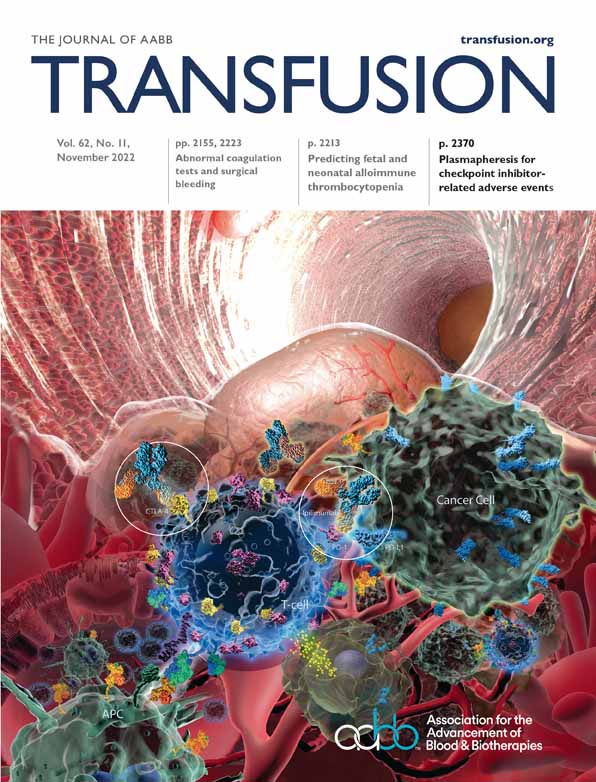Hemostatic function of cold-stored platelets in a thrombocytopenic rabbit bleeding model
Abstract
Background
Transfusion of cold-stored platelet concentrates (CS-PCs) appears effective in massively bleeding patients. However, few studies have evaluated their in vivo hemostatic function in severe thrombocytopenia.
Study Design and Methods
The in vivo function of plasma-depleted human PCs was evaluated in rabbits with a blocked reticuloendothelial system and busulfan-induced thrombocytopenia. On day 1, a human apheresis PC was processed in a platelet additive solution (PAS-PC) and split evenly for cold or room temperature storage (RTS). On days 3, 6, or 9, RTS- or CS-PAS-PCs were transfused (4.0 × 109 platelets/kg) after plasma depletion into two to four rabbits that developed adequate thrombocytopenia (<25 × 109/L). Ear bleeding time was measured by two incisions in small veins. The hemostatic rate was defined as the percentage of rabbits achieving bleeding cessation within 600 s at either incision. The experiment was repeated using five different PCs on each storage day.
Results
The mean pre-transfusion rabbit platelet count was 8.6 ± 5.2 × 109/L. The hemostatic rates with RTS- and CS-PAS-PCs were both 100% on day 3, 93 ± 15% and 73 ± 15% on day 6 (p = .07), and 65 ± 36% and 73 ± 37% on day 9 (p = .27), respectively, with no statistical differences. Total platelet counts were significantly lower after CS-PAS-PC than RTS-PAS-PC transfusion on all days (e.g., 58.7 ± 5.7 vs. 42.4 ± 14.7 × 109/L, p = .0007, day 9), and did not reach 50 × 109/L in several experiments. Platelet count increments correlated significantly with hemostatic efficacy for CS-PAS-PC transfusion only.
Discussion
CS-PAS-PCs might achieve similar hemostasis as RTS-PAS-PCs in thrombocytopenic patients with mild bleeding. Hemostatic efficacy could be improved by transfusing more CS-PAS-PCs.
CONFLICT OF INTEREST
The authors have disclosed no conflicts of interest.




